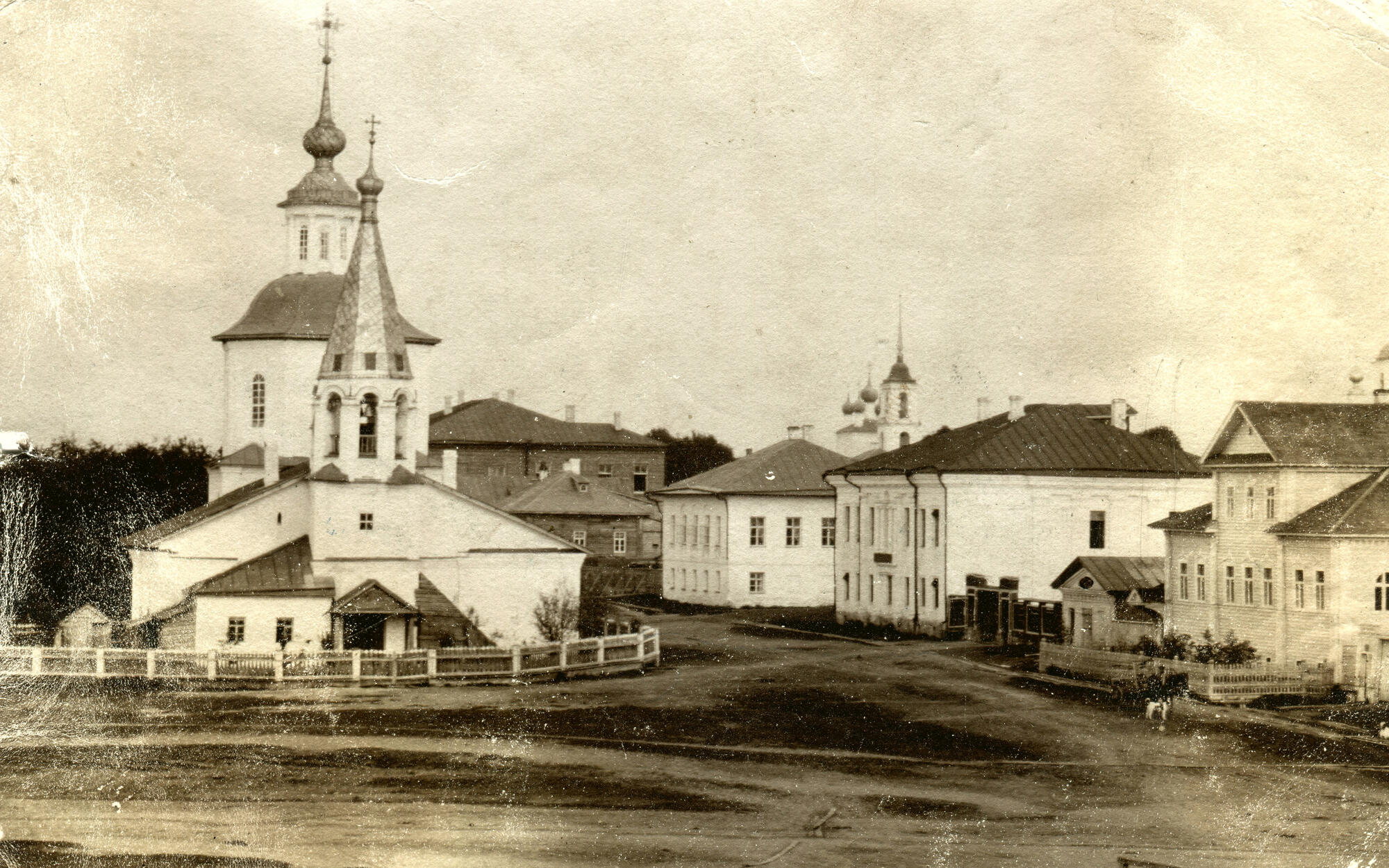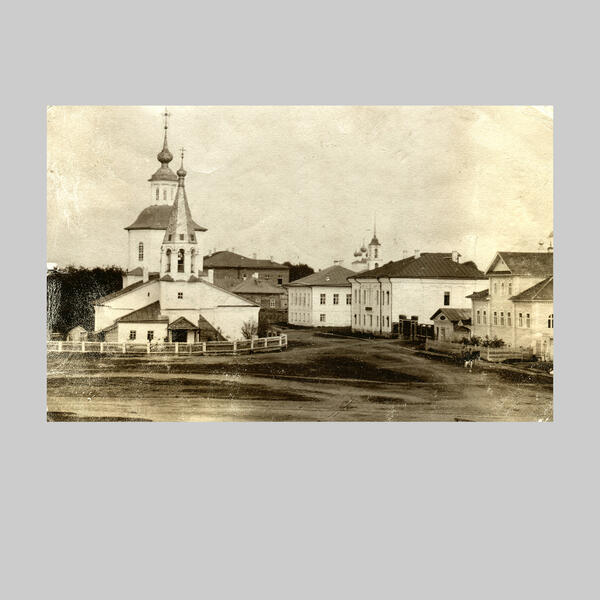Postcards were used to send messages, and they cost less than a regular letter in an envelope. The card from the collection of the Belozersk Regional Museum shows several buildings - the Church of John the Evangelist, the Specialized City School, a manor of local merchants and the County Council.
Since 1864, elective county institutions - county and governorate assemblies for the management of local economic affairs were established in governorates and counties. They supervised the construction of roads, hospitals, schools, the development of local industry, food supply issues. The counties were separated from the administrative authority, were a class-inclusive elected representative office and had some economic and financial autonomy. The order of their formation was as follows. At first, all landowners, representatives of the commercial and industrial class, possessing immovable property of certain value, as well as rural societies elected representatives for three years to county assemblies. Unlike the first two groups, the election of representatives from the peasantry was more difficult: rural communities initially sent representatives to the rural district assembly where the electors were elected, and only of them the necessary number of representatives to the county assembly was nominated.
The county assemblies were chaired by the county marshal of the nobility, who also headed the county nobility assembly. They met annually, usually in the autumn, for a short period of time to discuss local matters and the management of county business. For permanent work, the county assembly elected from its own constituency an executive body - the county councily, consisting of a chairman and two members. The county assemblies elected representatives from their members to the governorate assemblies. The activities of the counties were subject to control by the governors and the Ministry of the Interior. In case of any misunderstanding, the counties could file a complaint with the Senate.
In Belozersk, the county council has been working since 1866. At the beginning of the 20th century it was housed in a stone two-storey building on Sadovoya Street (modern name - Sergei Vikulov Street). This building can be seen on the postcard. Due to the property qualification and the multi-level character of the elections from the largest class of the county - the peasants, most of the members of this assembly were nobles, merchants and officials. The number of representatives from other estates was insignificant.
Since 1864, elective county institutions - county and governorate assemblies for the management of local economic affairs were established in governorates and counties. They supervised the construction of roads, hospitals, schools, the development of local industry, food supply issues. The counties were separated from the administrative authority, were a class-inclusive elected representative office and had some economic and financial autonomy. The order of their formation was as follows. At first, all landowners, representatives of the commercial and industrial class, possessing immovable property of certain value, as well as rural societies elected representatives for three years to county assemblies. Unlike the first two groups, the election of representatives from the peasantry was more difficult: rural communities initially sent representatives to the rural district assembly where the electors were elected, and only of them the necessary number of representatives to the county assembly was nominated.
The county assemblies were chaired by the county marshal of the nobility, who also headed the county nobility assembly. They met annually, usually in the autumn, for a short period of time to discuss local matters and the management of county business. For permanent work, the county assembly elected from its own constituency an executive body - the county councily, consisting of a chairman and two members. The county assemblies elected representatives from their members to the governorate assemblies. The activities of the counties were subject to control by the governors and the Ministry of the Interior. In case of any misunderstanding, the counties could file a complaint with the Senate.
In Belozersk, the county council has been working since 1866. At the beginning of the 20th century it was housed in a stone two-storey building on Sadovoya Street (modern name - Sergei Vikulov Street). This building can be seen on the postcard. Due to the property qualification and the multi-level character of the elections from the largest class of the county - the peasants, most of the members of this assembly were nobles, merchants and officials. The number of representatives from other estates was insignificant.



